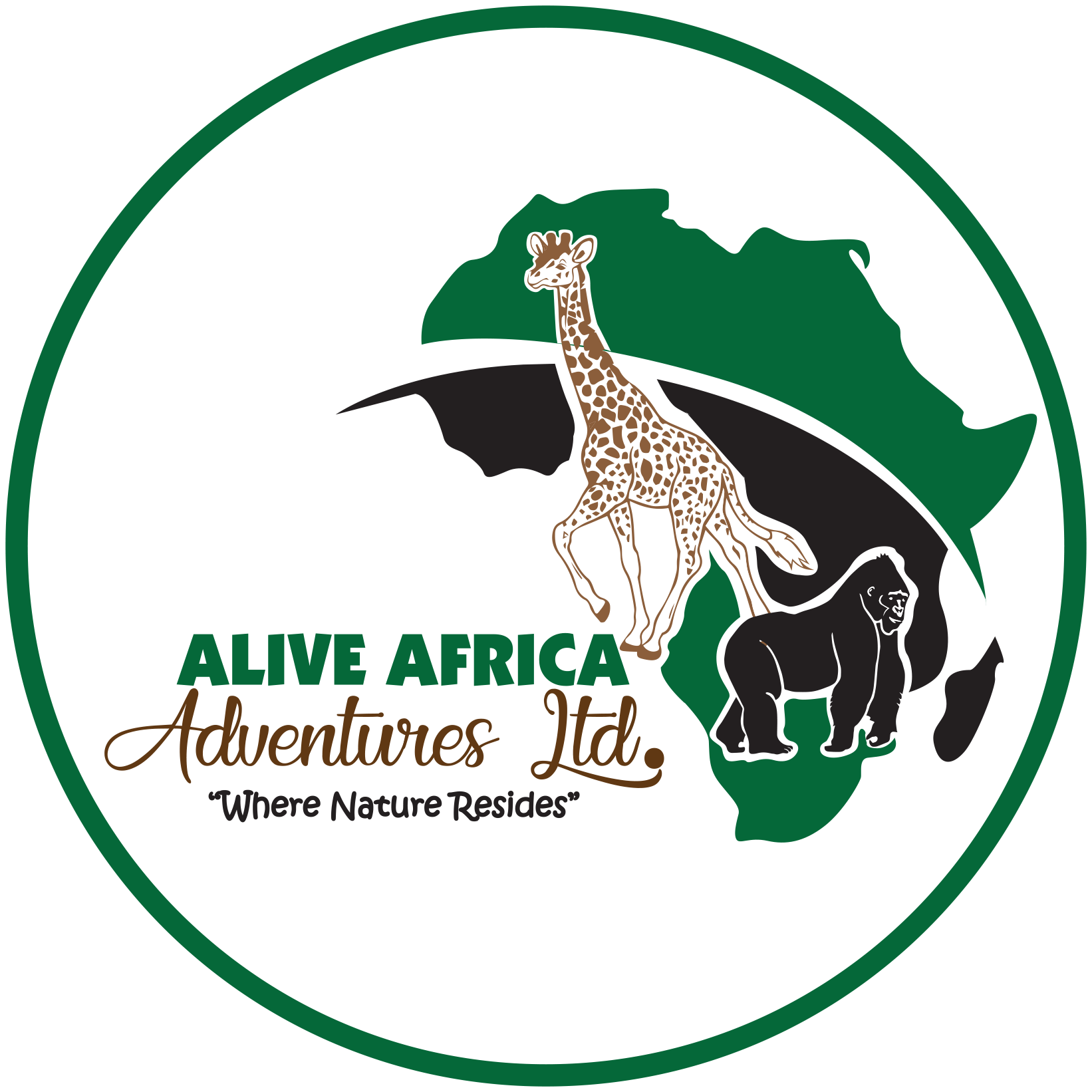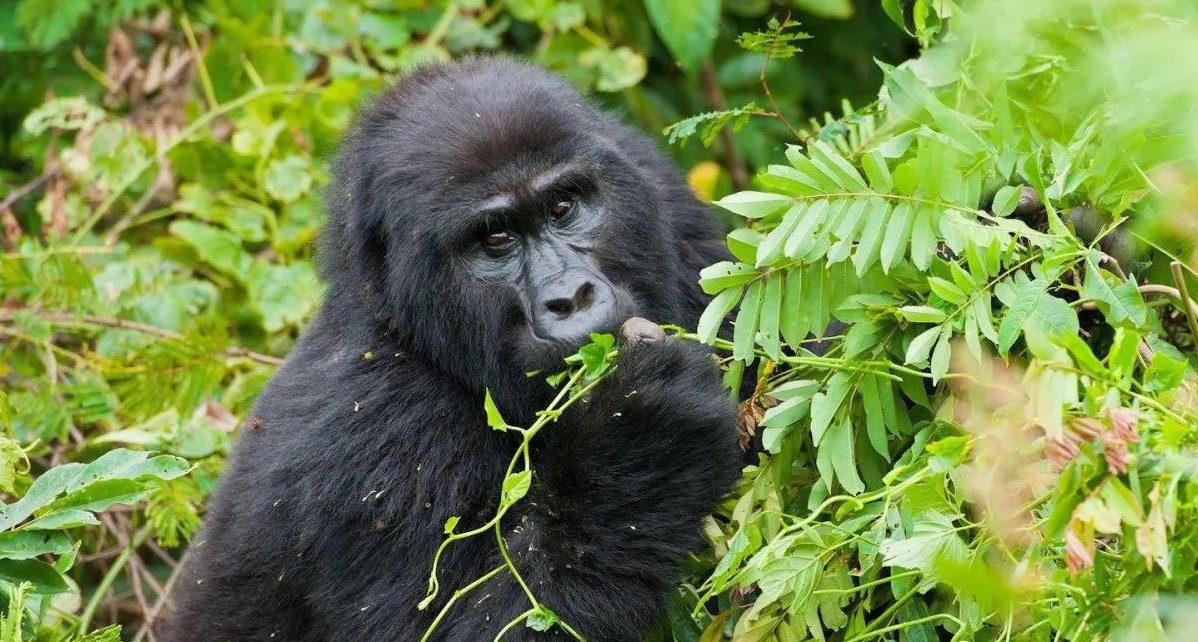The process of habituating wild mountain gorillas to human presence in their environment is known as gorilla habituation experience in Bwindi. It is a slow and gentle procedure. The process of mountain gorilla habituation in Bwindi Impenetrable Forest National Park takes two to three years, and it is carried out by a group of hikers, researchers, rangers, and conservationists.
A 4-hour interaction with semi-habituated mountain gorillas is part of the gorilla habituation experience, which takes place in Bwindi Impenetrable Forest National Park. Because mountain gorillas are thought to be near cousins of humans with 98% DNA, hundreds of visitors’ flock to Bwindi Impenetrable Forest National Park specifically to see them.
Only two gorilla families in Bwindi Impenetrable Forest National Park undergo mountain gorilla habituation. The gorilla families that are now undergoing habituated in Bwindi Impenetrable Forest National Park are the Bushaho and Biking groups. The park’s Rushaga and Nkuringo gorilla trekking regions are home to the two gorilla families.
A gorilla habituation permit from the Uganda Wildlife Authority is required in order to become used to any of the Bwindi gorilla families. Gorilla habituation can occur at any time of year, and entry to the national park can be completed in a single day.
Bwindi gorilla Habituation experience
An early morning briefing at the park offices is the first step in the gorilla habituation process. The hikers have to eat breakfast and rise early in the morning. The trekkers are driven to the park offices by the drivers, where they meet up with other participants for a briefing given by the park wardens.
Before being divided into groups, the trekkers are instructed on the guidelines for the habituation activities at the briefing. Once the trekkers have formed groups, armed ranger leaders lead them into the bush.
Depending on the location of the mountain gorilla family and the pace of the trekkers, finding the mountain gorillas in Bwindi could take anywhere from two to seven hours. The trekkers get to see a variety of park animals, monkeys, and birds while on the hunt.
The hikers are granted four hours to spend time with the critically endangered gorilla family once they find the semi-habituated group they were searching for. During the allocated time, the trekkers are allowed to move with the gorillas, observe their behaviours, take pictures, and do anything they can to gain their trust.
Permits for gorilla habituation in National Park of Bwindi
The Uganda Wildlife Authority issues habituation permits for Bwindi Impenetrable Forest National Park for $1500 for foreign non-residents, $1000 for foreign residents, and shs750,000 for inhabitants of East Africa. For the same price, you can obtain the habituation permits directly from the Uganda Wildlife Authority offices or from a reputable local tour operator. Only four persons are permitted to hike with a single semi-habituated gorilla troop in Uganda, where there are only eight gorilla habituation permits available.
Travelers wishing to visit Bwindi can arrange for gorilla permits through Alive Africa Adventures. Because Bwindi only has eight gorilla habituation licenses available on any given day, we urged clients to book their permits in advance to minimize any potential issues. Send us an email with the dates of the month and year you wish to travel in order to reserve gorilla habituation permits.
We will use these dates to verify with Uganda Wildlife Authority to see whether the permits are still available for those dates. We will send you an email with banking information as soon as the permits become available, and we will schedule the permits for you as soon as we have the money.
Packing list for Gorilla Safari
Waterproof hiking shoes, gardening gloves, cotton stocks, rain jackets, long sleeve shirts and pants, hats, sunscreen, drinking water bottles, energy-boosting snacks, insect repellents, facemasks, sanitizers, and first aid kits are among the items you should bring for your Bwindi gorilla habituation.
When to go for Gorilla habituation experience in Bwindi
For mountain gorilla habituation, travellers can visit Bwindi Impenetrable Forest National Park throughout the year, while some months are preferable to others. The ideal months for a gorilla habituation safari in Bwindi are the dry months of June through September and December through February. Their short foliage allows for good views of the park’s animals, they have little to no rainfall, which makes the trekking paths less muddy or dry, and the roads going to the park are passable.
Travelers can still take advantage of substantial discounts on lodging by visiting Bwindi Impenetrable Forest National Park during the rainy seasons of March through May and October through November. However, visitors should be aware that the park’s roads are impassable, there is an abundance of vegetation that obscures views of the animals, and the trekking trails become muddy and dangerous during the rainy season.
Accommodation options for Bwindi gorilla habituation experience
The following lodging options are available in the Rushaga sector: Wagtail Eco Safari Lodge, Bwindi Jungle Lodge, Gorilla Valley Lodge, Lake Mulehe Gorilla Lodge, Nshongi Camp, Rushaga Gorilla Haven Lodge, Four Gorillas Lodge, Rushaga Gorilla Camp, and Rushaga Gorilla Camp.
The following lodging options are available in the Nkuringo sector: Nshongi Camp, Crested Crane Bwindi Hotel, Lake Mulehe Gorilla Lodge, Virunga Campsite, Mutanda Eco Community Center, Gorilla Heights Lodge, Clouds Mountain Gorilla Lodge, Bwindi Backpackers Lodge.
Getting to Bwindi for gorilla habituation
There’s no shortage of opportunities for visitors to Bwindi National Park to get into the gorilla habit. The first involves traveling nine to ten hours by car from Entebbe or Kampala via Masaka to Mbarara to Kisoro to Kabare. The final option is to fly from Entebbe International Airport or Kajjansi Airstrip to Kihihi Airstrip or Kisoro Airstrip, from which one must drive a short distance to the park. Driving from Kigali through the Cyanika or Katuna borders takes four hours.

